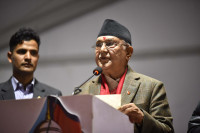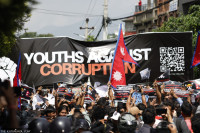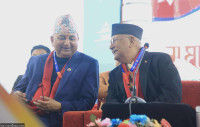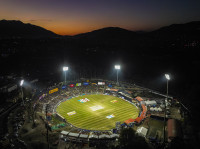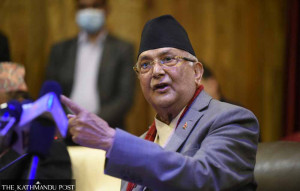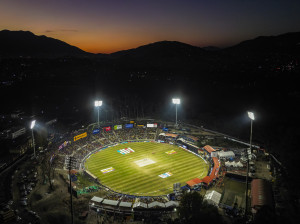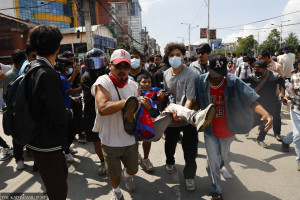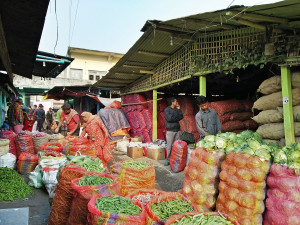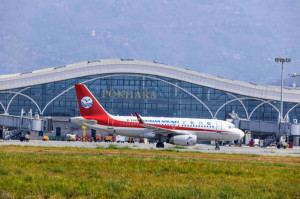Editorial
The curtain rises
International theatre fest reflects the country’s thriving art and culture scene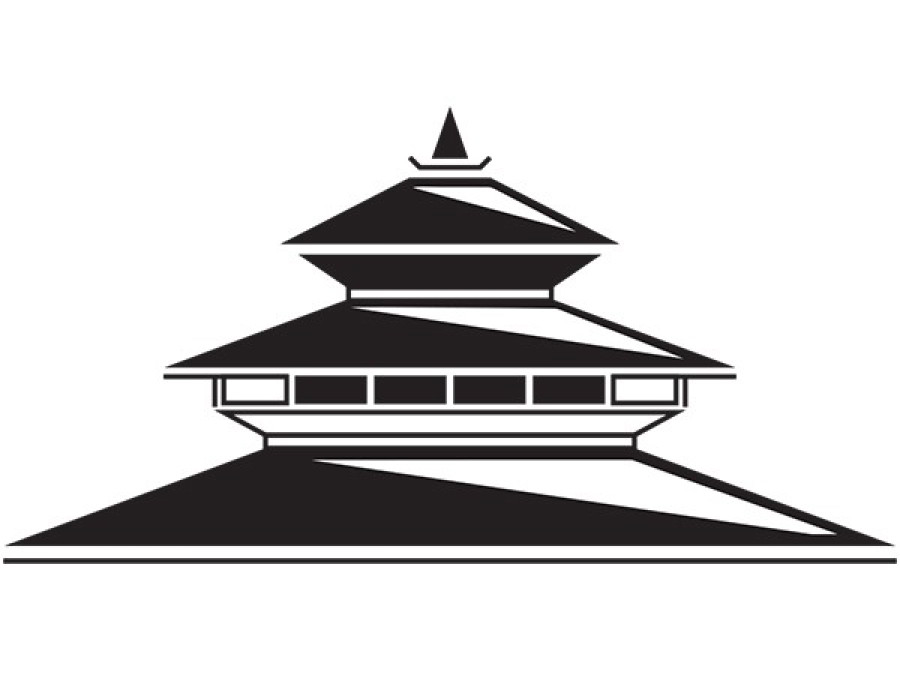
Along with music, it is perhaps theatre that has the longest and most intricate entanglement with Nepal’s socio-political history and transformations. Sometimes overtly political and dramatic, other times satirical and comedic, theatre has long mirrored Nepali society, warts and all. From the dramatic literary work of Bal Krishna Sama to the explosion of theatre groups and artists that the Capital is currently witnessing, theatre, though often beset by censure, has come a long way.
In celebration of this long and storied history, and the vibrancy of Nepal’s contemporary dramatic arts scene, the Nepal International Theatre Festival raised its curtains on Monday. Eight theatre groups—Mandala Theatre, Theatre Village, Theatre Mall, Shilpee Theatre, Actors’ Studio, Katha Ghera, One World Theatre, and Sarwanam Theatre—have come together to host a series of both foreign and domestic plays that are being screened across the Valley and in Pokhara, Janakpur and Biratnagar. The event, centred around the theme ‘Theatre for Social Transformation: An Artistic Voyage’, recognises theatre as the staging ground not just for artistic work but work that aims at socio-political change.
Theatre is just one facet of Nepal’s thriving arts and culture sphere. Even as the International Theatre Festival takes place, an International Film Festival is taking place alongside it, screening short films, features and documentaries from across the world. And in just a few days, the Art and Literature Festival will take place, hosting dozens of writers, artists and intellectuals in the Eastern border town of Kakkarbhitta in Jhapa. Just last December, the Nepal Literature Festival—a carnivalesque gathering of writers, thinkers, artists, journalists and politicians—took place on the shores of Phewa Lake, Pokhara.
The sheer number of festivals happening across the country reflects how much the arts is thriving in Nepal. Even if politics might be moribund, the arts are vibrant and are winning accolades globally. From music to theatre, from film to dance, Nepalis, a majority of them young, are exploring and experimenting, and in the process, reflecting new ways in which society can see itself. The arts scene is not closeted; it is growing past borders and boundaries. The festivals being hosted are international in nature, with participants from across the world. Rajan Khatiwada, director of Mandala Theatre, says the theatre festival is being organised so that “Nepali theatre personnel benefit from a wider worldview and exposure” and “an opportunity for everyone to share and listen to each other”.
This blossoming, however, has largely taken place independently of the government. Despite the few grants that are available for film, music and theatre, most ventures have been privately-funded with artists going independent. The Nepal Pragya Pratisthan, or Nepal Academy, the public body charged with promoting the arts, culture and literature has done little of significance. The Cultural Corporation, which hosts the National Theatre, has largely been inactive on the theatre scene, except as a public venue that can be hired for events. The Nepal Arts Council, perhaps the most active of the public arts and culture bodies, has been a lone public patron of the arts, hosting photography, fine arts and visual arts exhibitions.
The theatre festival is being organised at a time when there is a fear that open expression could potentially come under threat. Creative platforms like these festivals are venues where dissenting and controversial views can be aired and engaged with. The arts are not about agreement; they are about opposition and conflict and an understanding that can arise from two divergent points of view coming together. This is what Nepal’s booming arts and culture scene has facilitated. The arts could always benefit from more patronage, both public and private, but more than that, it must be allowed to enjoy artistic freedom, bereft of censorship.




 14.12°C Kathmandu
14.12°C Kathmandu